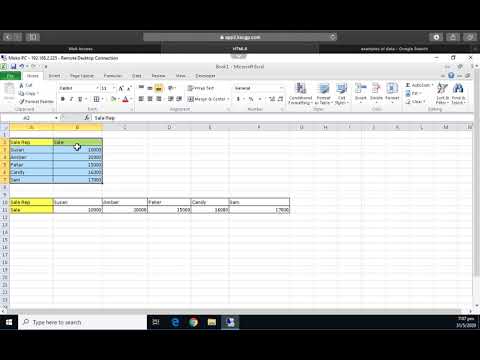Fixing Excel Sheets: Expert Tips and Techniques

Working with Excel sheets can sometimes feel like navigating a labyrinth, especially when errors or complex data manipulations are involved. Whether you're a data analyst, an accountant, or just someone who uses Excel to manage their personal budget, you'll inevitably run into issues that need fixing. In this comprehensive guide, we'll explore expert tips and techniques to fix common and not-so-common Excel problems, ensuring your data is accurate, functional, and ready for analysis.
The Basics of Excel Troubleshooting

Before diving into complex fixes, it’s worth revisiting some basic troubleshooting steps:
- Check for Typographical Errors: Data entry mistakes are the most common issue. Look for misspellings, incorrect numbers, or misplaced symbols.
- Validate Formulas: Ensure that all formulas are correct. A misplaced comma or an extra parenthesis can throw off an entire sheet.
- Check for Hidden Characters: Sometimes, hidden spaces or other invisible characters can cause calculations to go awry.
Advanced Fixes for Common Excel Problems

1. Dealing with Formulas

Formulas are the heart of Excel, but they can become a source of headaches:
- Correcting Circular References: A circular reference occurs when a formula refers to itself, either directly or through a chain of references. Identify and remove the circular reference by tracing precedents and dependents or by manually reviewing formulas.
- Handling #DIV/0! and #VALUE! Errors:
- #DIV/0!: Indicates a division by zero. Use the
IFERRORfunction to catch and replace errors with a custom value or message. - #VALUE!: This error suggests an incorrect data type used in a formula. Ensure all variables are of the correct type before performing operations.
- #DIV/0!: Indicates a division by zero. Use the
🔍 Note: When troubleshooting errors like #DIV/0!, always check if the denominator could be zero or if the range includes blank cells.
2. Data Validation and Cleaning

Ensured integrity of data is crucial:
- Use Data Validation Rules: Prevent future errors by setting up data validation rules which restrict the type of data or values that users can enter into cells.
- Remove Duplicates: Use the “Remove Duplicates” feature to ensure uniqueness, which is vital for datasets where duplicates could skew analysis.
- Text to Columns: Split text or convert delimited data into separate columns for easier manipulation.
3. Workbook and Worksheet Management

Manage your Excel environment effectively:
- Consolidate Data: Use the
Consolidatefeature to combine data from multiple ranges or sheets into one summary sheet. It’s particularly useful when dealing with multiple sources or time periods. - Protect Sheets and Workbooks: To avoid unintentional changes or tampering, protect your sheets with passwords or lock cells to prevent edits.
Visualizing Data Errors

Errors are easier to spot when visualized:
- Use Conditional Formatting: Highlight cells that contain errors or meet specific criteria with different colors or icons to quickly identify issues.
- Create an Error Dashboard: Dedicate a sheet for error tracking where formulas can automatically update based on errors in other parts of the workbook.
| Error Type | Visual Representation | Common Causes |
|---|---|---|
| #N/A | Red text | Lookup value not found |
| #VALUE! | Yellow background | Incorrect data type |
| #DIV/0! | Blue strike-through | Division by zero |

4. Macro and VBA Solutions

For repetitive or complex fixes, macros can be a lifesaver:
- Create Error-Checking Macros: Write VBA code to scan the entire workbook for specific errors, then perform corrective actions or highlight issues for manual review.
- Automate Data Cleaning: Use VBA to automate the removal of duplicates, formatting adjustments, or data validation processes.
In wrapping up our extensive exploration of Excel fixes, remember that the key to becoming proficient is not just understanding how to rectify errors but preventing them. Keep your Excel skills sharp by regularly reviewing your work for potential pitfalls, using best practices for data management, and staying updated with Excel's ever-evolving features. Through diligent practice and application of these techniques, you'll ensure your Excel sheets are accurate, efficient, and error-free, providing a robust foundation for any analysis or decision-making process.
How do I quickly find all errors in my Excel sheet?

+
Use the ‘Go To Special’ feature, selecting ‘Formulas’ and then ‘Errors’ to navigate directly to cells with errors. Alternatively, you can use conditional formatting to highlight errors visually across your workbook.
What should I do if Excel is slow?

+
Optimize your Excel files by reducing the use of volatile functions like INDIRECT, OFFSET, or TODAY. Also, consider splitting large files into multiple, smaller workbooks, and manage calculations to manual if not necessary for real-time updating.
Can macros really help in fixing Excel errors?

+
Absolutely, macros can automate repetitive tasks, error-checking, and data cleaning. Writing a VBA script to find and correct common errors or validate data can significantly reduce manual work.



